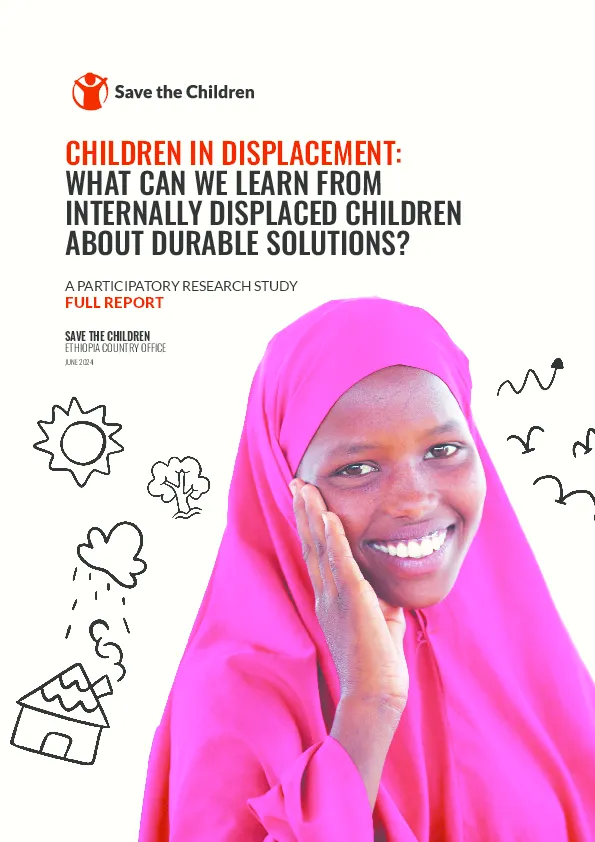
Reports, Study: Research
Children in Displacement: What can we learn from internally displaced children about durable solutions?
Publication year:
2024
English
Format:
PDF (8.1 MiB)
Publisher:
Save the Children Ethiopia,Save the Children International
Over the past years, Ethiopia has been affected by high levels of internal displacement induced by armed conflict, intercommunal violence, and recurrent climatic shocks. According to the UN OCHA internal displacement overview for Ethiopia and the IOM Displacement Tracking Matrix report, as of June 2024, an estimated 4.5 million people were displaced with close to 57 per cent under the age of 18 years. Displacement has become protracted in many communities. About 56 per cent of IDPs have been displaced for more than one year, 23 per cent for two to four years and 11 per cent for five or more years. It is also estimated that about 3.3 million IDPs have returned to their areas of origin since January 2022, with little or no assistance. However, due to ongoing displacement in several regions the number of IDPs today stands at 4.5 million.
IDPs living in protracted displacement can be assisted in returning, relocating, or locally integrating, as informed by context-specific assessments. With that understanding and to address the challenges of IDPs, the Ethiopian government has developed a Durable Solutions Initiative [https://bit.ly/4dBLvv8] with the aim of supporting IDPs to realise long-term, sustainable solutions to their protracted displacement and to become self-reliant and resilient in the face of conflict and drought. The government is also in the process of drafting its National IDP Proclamation.
As the Ethiopian Government progresses with its strategy, there is a need to gather evidence on what works for different durable solution pathways for affected IDP children. Save the Children Ethiopia has conducted this participatory research to address the existing knowledge gaps surrounding programming and policy on durable solutions for children in internal displacement. The research has specific context and area-based assessment and analysis; and seeks to understand what works and what doesn’t work for children and families for all possible durable solution pathways: including those currently living in IDP camps but informally integrated with the local host community, those who have returned to their community of origin and those who have been relocated to new sites. It covers both conflict and climate induced IDPs.
The research is financed by Save the Children Korea and Save the Children Italy. It was spearheaded by Save the Children Ethiopia Country Office and supported by Save the Children International’s Migration and Displacement Initiative.
Read full abstract
View & Download
Document information
Format
Content type
Country
Region
Rights
© Author/Publisher
Found a mistake? Help us improve!
If you have noticed a document assigned to the wrong author or any other inaccuracies, let us know! Your feedback helps us keep our data accurate and useful for everyone.
Share
Link
